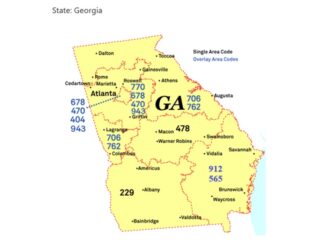CARTERSVILLE, Ga. – Centuries before Europeans came to Northwest Georgia, a number of Native American tribes inhabited the area. But, one particular tribe left its mark on the area by building ceremonial mounds that served as the centerpiece of their city.
These mounds – today known as the Etowah Indian Mounds – have survived for centuries and offer a one-of-a-kind look at this bygone civilization.
Located on the north shore of the Etowah River and south of modern-day Cartersville, the mounds were inhabited from 1000 to 1550 by Muskogean Native Americans of the Mississippian culture, so named because the culture originated along the banks of the Mississippi River. Designated a National Historic Landmark in the 1960s, this 54-acre state park includes a museum with artifacts discovered at the site, six mounds the natives built, and a number of other related sites.
The now 1,000-year-old Native American town is generally believed to be a city Hernando de Soto visited in 1540 when he was exploring the area. By that time, according to historians, the civilization was in decline and the Etowah Indian Mounds may have been abandoned.
The largest mound, today known as Mound A, stands about 65 feet tall, making roughly as tall as a six-story building, and offering travelers willing to climb the stairs to the top a nice view of the surrounding landscape. The chief priest and his family lived on top of this mound, and from here, he presided over the ceremonies that took place in the city’s plazas below. After the chief died, his successor would burn the house on top and heighten the existing mound before building a new home on top.
One of the smaller mounds, known as Mound C, was completely excavated and rebuilt. What archeologists discovered inside of Mound C has provided historians with a wealth of information they use to study and understand this society.
The entire city was fortified and a number of “wattle and daub” single-family houses stood in the area surrounding the mounds. The people who lived here grew crops and caught fish and mussels from the Etowah River.
Park officials say they have excavated about 9 percent of the site, but those excavations have revealed an abundance of information about the society and its rituals. Many of the artifacts unearthed at the site – including tools, artwork and jewelry –are on display at the park’s museum.
For years, the land on which the Etowah Indian Mounds sit was privately owned, but the state purchased the property in 1953. Interestingly, Gen. William T. Sherman visited the Etowah Indian Mounds in the 1840s, calling them “remarkable” in his memoir.




